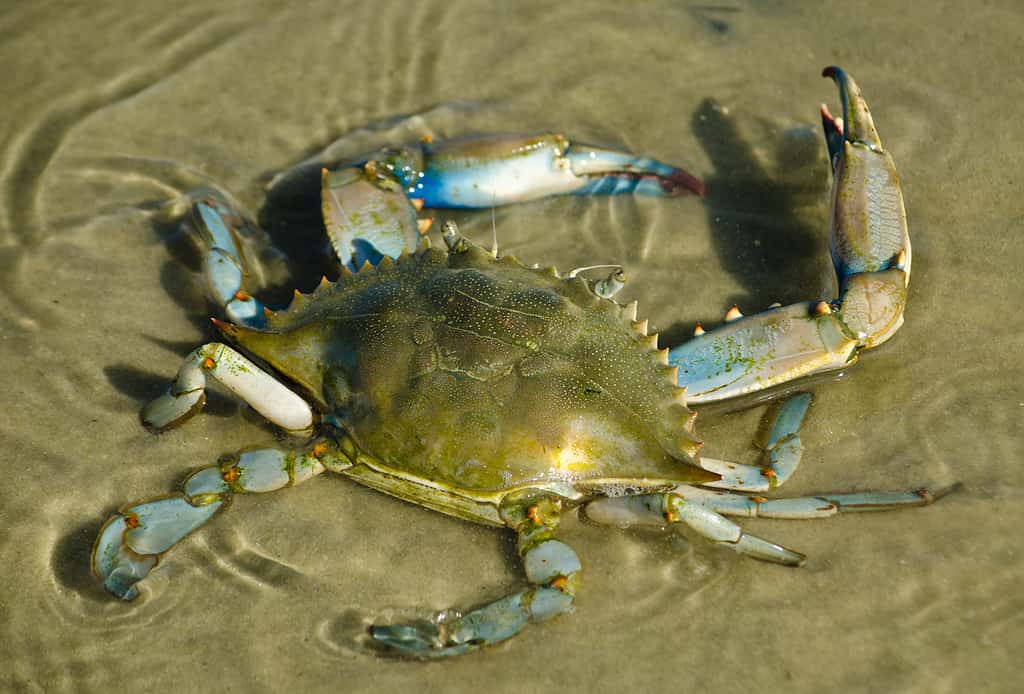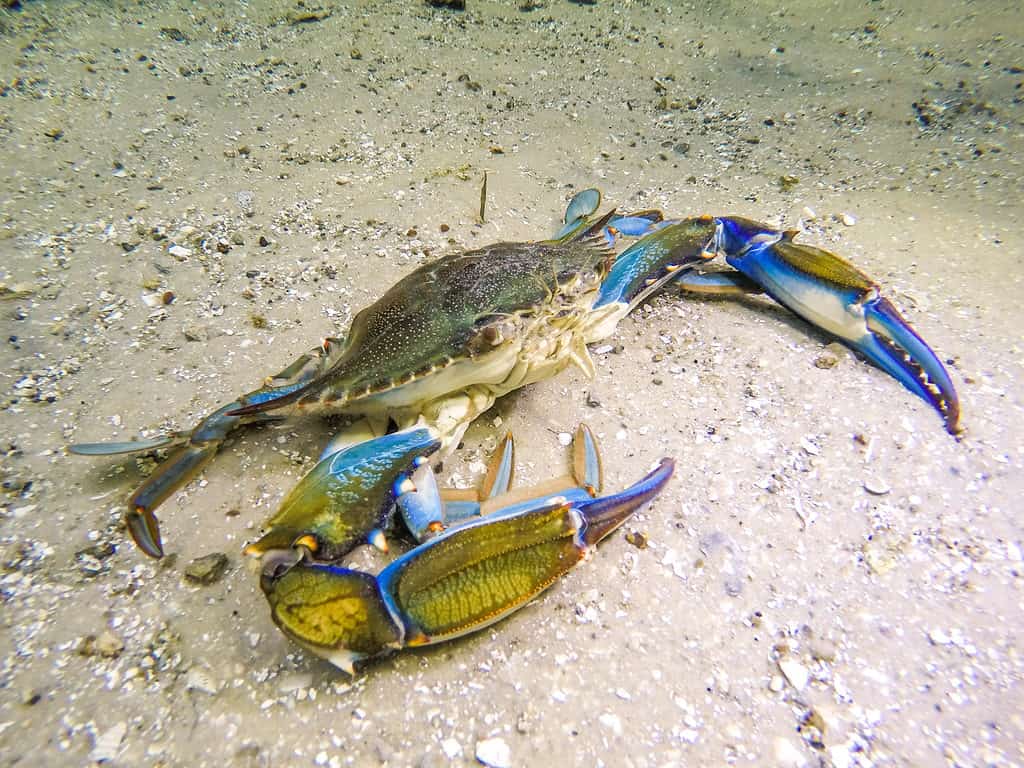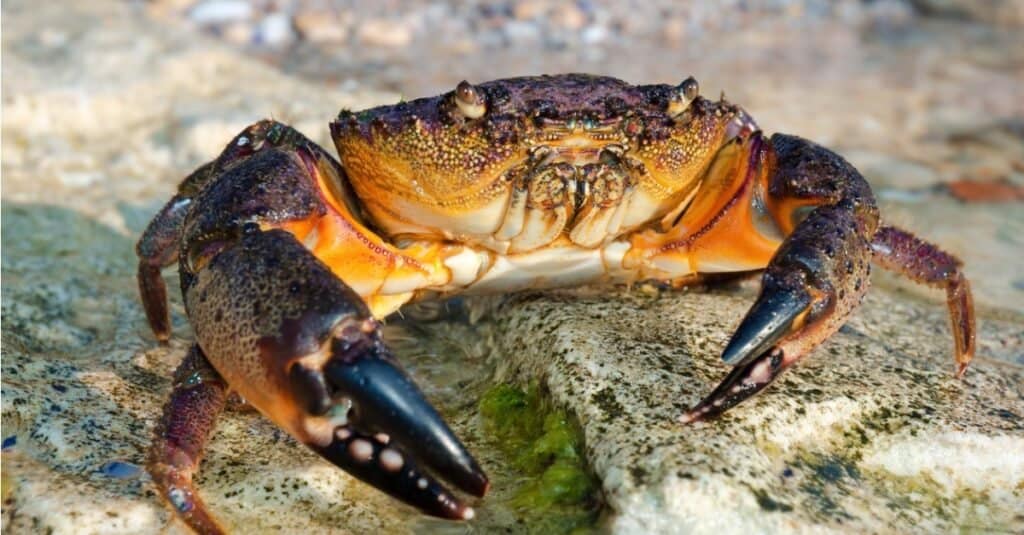As humans evolved, so did their techniques to get food. We became hunters, as well as gatherers. Of course, that was long ago. Now, we go to the grocery store to buy our pre-packaged ground beef or chicken cutlets. Several sports involve hunting or even fishing — and they have been popularized with channels dedicated to both. When it comes to both hunting and fishing, the government imposes restrictions on what to hunt and when to hunt.
There are seasons for each animal or marine creature. There are also restrictions on the amount or number. The rules are there to ensure there isn’t overhunting or overfishing. When it comes to crabbing in Louisiana, there are several regulations set forth by the state. Let’s take a look at the Louisiana Crabbing Season: the timing, bag limits, and other important rules.
Crabbing Season

Blue crabs are abundant in Louisiana waters — from the coastal waters to the estuaries.
©MeliaMuse/iStock via Getty Images
The Louisiana Department of Wildlife and Fisheries sets the rules when it comes to hunting and fishing. In terms of fishing, all of it is described on the government website, including when crabbing season is. For Louisiana, crabbing season is year-round. At any point during the entire year, you can fish for crab. However, the Louisiana Department of Wildlife and Fisheries reserves the right to prohibit crab traps for 16 days between February 1 and March 31 and 14 days in the springtime.
So what does this mean? It means that you are free to fish for crab at any time, except when the Louisiana Department of Wildlife and Fisheries prohibits it with crab traps.
Bag Limits

The largest blue crab fishery in the world is located in Louisiana.
©Jen Helton/Shutterstock.com
Let’s talk about bag limits. Because crabs are so abundant in Louisiana, the Louisiana Department of Wildlife and Fisheries has set no size limits when it comes to blue crabs, as well as stone crabs. There are no bag limits for any species of crabs that exist in the state. However, there is a limit of 12 dozen blue crabs per person each day. This means that you can have in your possession 144 blue crabs per day.
Other Important Rules

There are several species of stone crabs, but the one found in Louisiana is called the Gulf stone crab.
©iStock.com/connect11
Of course, the Louisiana Department of Wildlife and Fisheries has set out several other important rules that you must follow. Even though there are no limits for blue or stone crabs, there are some regulations.
For example, if you’re thinking about harvesting adult female crabs, think again. If these adult female crabs are in the berry stage (which is when they are carrying eggs and are attached to their abdomen), then you have to return them immediately.
You must have a Hook and Line Fishing License or Basic Fishing License for anyone who wants to go crabbing in Louisiana waters. Check with the Louisiana Department of Wildlife and Fisheries to determine which one is right for you.
Crab Trap Rules

There are several types of crabs you can catch in Louisiana including the Atlantic blue crab, the lesser blue crab, the ornate blue crab, and the Gulf stone crab.
©iStock.com/Kirkikis
There are also crab trap rules you must adhere to, as described by the Louisiana Department of Wildlife and Fisheries.
- You cannot check crab traps before sunrise and after sunset.
- You cannot have more than 10 crab traps per fisherman.
- You should place crab traps in areas where sea vessels can pass through the waters safely, which means you should not place them in entrances or high-traffic areas.
- Every crab trap you have should be labeled properly with your information, including your commercial fisherman’s license number.
- Your crab traps need to have a solid float, sized at 6 inches in diameter (or more), and attached to a ¼ inch non-floating line.
- All traps need to have three escape rings (at minimum).
- Crab Traps are not allowed in the Tchefuncte River.
The photo featured at the top of this post is © BirdHunter591/iStock via Getty Images
Thank you for reading! Have some feedback for us? Contact the AZ Animals editorial team.






